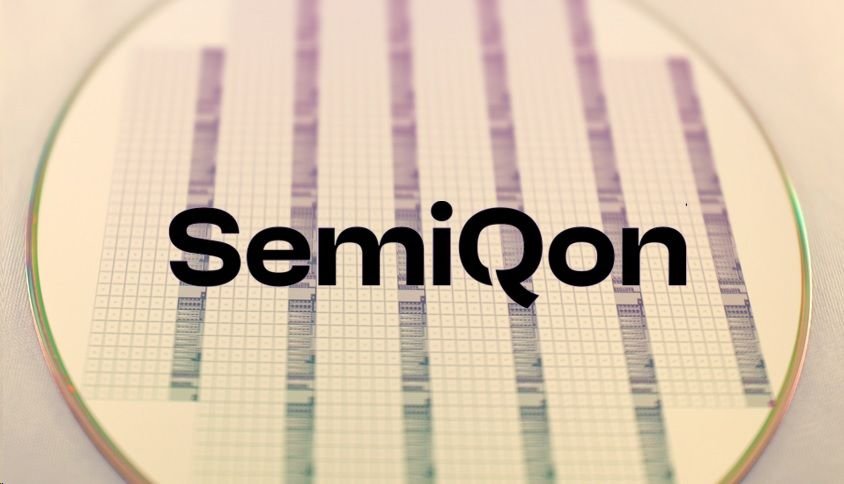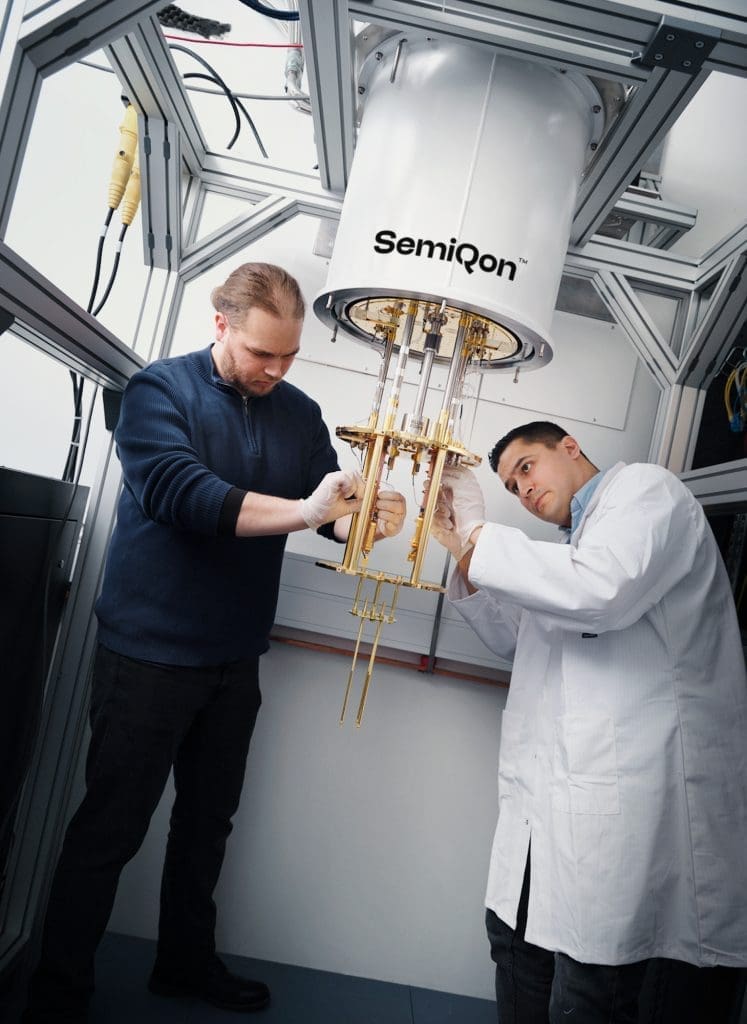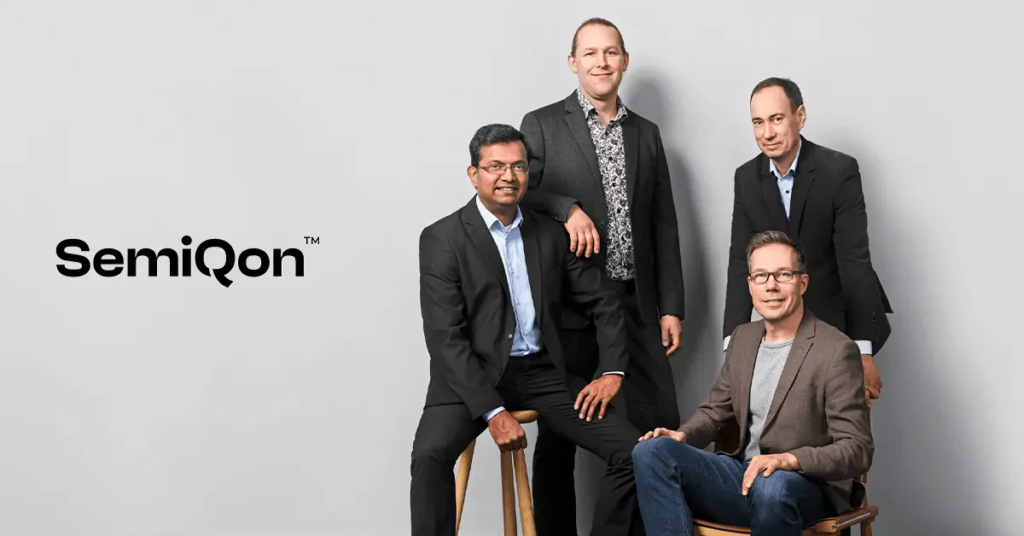On 14 October 2025, SemiQon, in partnership with VTT, clinched the coveted “Impact Expected” award from EARTO (the European Association of Research and Technology Organisations). Their groundbreaking cryogenic CMOS chip technology, designed for quantum computing and space applications, was singled out for its potential to reshape computing, energy efficiency, and European autonomy in microelectronics.
The recognition signals growing momentum around low-temperature electronics, and the award lends both prestige and validation to strategies that intertwine quantum science, chip innovation, and strategic industry policy.

Table of Contents
What Makes the Cryogenic CMOS Technology Exceptional
At the heart of the honour is SemiQon’s cryogenic (cryo-) CMOS chip — a semiconductor device engineered to operate reliably at ultra-low temperatures (often near absolute zero). The innovation allows full advanced CMOS functionality in cryogenic environments, a capability that unlocks new pathways for quantum computers, space electronics, and other frontier applications.
Here are key advantages that convinced EARTO judges:
- Massive Energy Savings for Space Systems
In space missions, where power budgets are tight, SemiQon’s chip can reduce power consumption by 50–90 %, helping stretch limited energy resources on satellites, probes, or lunar vehicles, according to The Quantum Insider. - Lowering Costs of Quantum Infrastructure
SemiQon contends that in the short run, their technology could cut the cost and footprint of quantum computer readout infrastructure by up to 30 %. Over longer timeframes, the savings could exceed tenfold, especially by slashing cooling hardware and energy overhead. - No Need for Extra Cooling Infrastructure
Traditional quantum systems often require separate cooling structures just for the control/readout electronics. SemiQon’s chip, by functioning at the same low temperatures, eliminates this duplication. That could lead to global savings estimated at USD 20-30 billion annually in cooling costs across data centres and supercomputing systems. - Strategic Autonomy and European Strength
The innovation is not just technical — it also bears geopolitical weight. Europe has been striving for self-reliance in critical technologies. SemiQon’s solution, now manufactured in European pilot lines and planned centres (Micronova, Kvanttinova), helps shore up semiconductor sovereignty.
SemiQon spun off from VTT in 2023 to scale this innovation into a commercial trajectory. The chips are now produced in European pilot foundries, with future volume operations anticipated at VTT’s planned Kvanttinova hub in Espoo, Finland.
The underlying cryo-CMOS approach holds promise beyond quantum and space — its energy efficiency and low heat might extend its reach into supercomputing, environmental monitoring, and other systems where cooling and power constraints are bottlenecks.
Voices from SemiQon, VTT, and the EARTO Award
Himadri Majumdar, Chief Executive Officer of SemiQon, expressed gratitude and shared vision:
“Although cryogenic electronics may seem niche today, they will soon become mainstream — first driven by quantum computing and aerospace. We’re proud to leverage VTT’s foundational work. This award highlights the promise of our technology and the impact we aim to create.”
From VTT, Tauno Vähä-Heikkilä, Vice President for Microelectronics and Quantum Technology, framed the award in broader institutional terms:
“Innovations such as the cryo-CMOS offer the opportunity to renew businesses and drive significant growth to society. This recognition goes beyond a single breakthrough. It celebrates the vital role that research and technology organisations play in strengthening Europe’s competitiveness, building resilience and addressing global challenges.”
EARTO’s “Impact Expected” prize is intended to spotlight technological breakthroughs judged likely to generate outsized societal, economic, or strategic outcomes. SemiQon and VTT’s victory in this category suggests that their cryogenic chip is viewed not just as a flash in the lab, but as a technology with broad transformative potential.

Implications and the Road Ahead
This award provides more than a trophy — it strengthens SemiQon’s credibility with investors, industry partners, and national or continental policymakers. In an era where quantum and space technologies are high-stakes arenas, recognition from a prestigious European body adds serious weight.
Market Forecast & Strategic Timing
Analysts place the global cryogenic CMOS market currently above EUR 3 billion, with projections toward EUR 10 billion by 2030. SemiQon claims its chip manufacturing cost is more than 50 % lower than comparable devices, a competitive edge that can accelerate adoption.
Because quantum computing is still in development, the most immediate opportunities are in control electronics, readout systems, and support circuits that must operate near absolute zero. SemiQon aims to begin customer product testing within two years, embedding their chip directly into systems under realistic operational loads.
Sustainability and Cooling Cost Reduction
One of the most compelling messages is environmental: removing redundant cooling systems and slashing energy consumption addresses one of the long-persistent headaches of high-performance computing. In an age of climate sensitivity, architectures that reduce energy and thermal footprint will be particularly welcomed.
Strategic Autonomy & Global Positioning
For Europe, this is a step toward reducing reliance on external semiconductor supply chains. SemiQon’s alignment with European pilot lines and tech hubs reinforces continental ambitions for sovereignty in high-tech sectors.
Simultaneously, it puts pressure on other regions to develop competitive cryogenic electronics capabilities. Quantum computing, space systems, and advanced sensors are global battlegrounds, and building technological leadership in cryo-CMOS could yield leverage in future standards, supply chains, and strategic infrastructure.
Challenges and Risks Ahead
No technology path is without headwinds. Among key challenges:
- Scaling production — transitioning from pilot lines to high-volume, defect-free manufacturing is notoriously challenging in advanced semiconductor domains.
- Reliability & yields — working at cryogenic temperatures introduces material stress, thermal cycling, and reliability concerns that must be rigorously proven in real-world systems.
- Market adoption & inertia — many quantum or space projects have existing electronics architectures; persuading them to migrate to SemiQon’s technology will require demonstrated gains, compatibility, and integration toolchains.
- Competition & alternative approaches — rivals may pursue alternative readout electronics models, or novel technologies that bypass CMOS entirely.
Still, the award and current momentum suggest SemiQon is well-positioned to navigate these obstacles.
What This Means for Nigeria, Africa, and Global Technology Trajectories
Although this development is Europe-centred, its ripple effects bear relevance globally, including to Nigeria and Africa. Here’s why:
- Leapfrogging in Technology
Nations and institutions can monitor, learn, and adopt cryogenic electronics or quantum control systems as they reach maturity. This offers opportunities for local research groups, startups, or universities to gain footholds in next-gen technologies. - Research Collaborations
Institutions in Nigeria might explore partnerships, joint projects, or funding programmes bridging European cryo-CMOS innovators with African quantum, space, or electronics communities. Such collaboration can accelerate technology transfer while strengthening local capacity. - Sustainability & Energy Efficiency Lessons
The emphasis on cutting cooling power consumption is especially relevant in energy-constrained environments. The principles behind cryo-CMOS — energy thrift, minimal thermal overhead, systemic efficiency — can cross-pollinate into broader electronics and computing design in Africa. - Strategic Industrial Catch-up
As global superpowers race to lead quantum and space technologies, having national or regional presence, even in component niches, can anchor participation in future supply chains. Africa should not be a passive consumer but aspire to be a partner in the architecture of emerging tech ecosystems. - Talent & Human Capital Development
Advances like this underscore the growing demand for interdisciplinary talent: physicists, semiconductor engineers, cryogenic systems specialists, quantum hardware designers, etc. Nigeria and Africa broadly should accelerate investment in training and research programmes aligned with such future demands.

Conclusion
SemiQon’s receipt of EARTO’s “Impact Expected” award marks a milestone in the evolution of cryogenic CMOS technology and its potential role within quantum, space, and sustainable computing landscapes. The recognition is more than symbolic — it underscores confidence in the innovation’s capacity to deliver powerful, energy-efficient, scalable, and strategically relevant systems.
For European research and industry, it strengthens the narrative of sovereignty in critical technologies. For global audiences, it highlights a frontier where physics, engineering, and policy converge.
For Nigeria—or any forward-looking nation—the lesson is clear: now is the time to pay attention, to build networks, and to position ourselves so that when cryogenic electronics and quantum systems become mainstream, we’re not spectators but contributors.
Join Our Social Media Channels:
WhatsApp: NaijaEyes
Facebook: NaijaEyes
Twitter: NaijaEyes
Instagram: NaijaEyes
TikTok: NaijaEyes













![Mr Macaroni Drops Blistering Remark: ‘APC Filled with Most Corrupt People’ as He Slams Tinubu’s Controversial Pardon for Criminals=]] Mr Macaroni](https://naijaeyesblog.com/wp-content/uploads/2025/03/Mr-Macaroni-1-1-180x135.avif)

![Chaos Erupts in Abuja Hotel as BBNaija Star Phyna Sparks Fierce Scene Over Alleged N200,000 Dispute [VIDEO] Phyna](https://naijaeyesblog.com/wp-content/uploads/2024/11/A-Picture-of-Phyna-BBNaija-180x135.jpg)
























